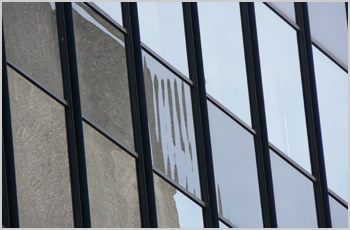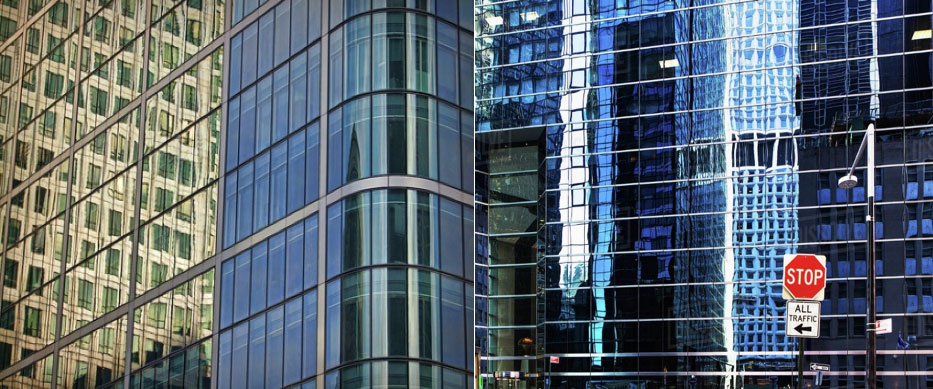Toughened Glass Roller Wave
At Nuline windows and doors we understand the importance of an uninterrupted view. That is why we use the highest quality Australian glass and proper manufacturing practices to ensure we minimise the chance of optical distortions like roller wave in glass.

Toughened glass is one of our favourite types of glass due to its safety and strength properties. Being six times stronger than float glass, it allows us to build expansive windows and doors without the need for obtrusive metal framing. Another benefit is that in the rare case the glass is broken, it will break into small blunt pieces and not into dangerous glass shards like its float glass counterpart.

The only problem with toughened glass is that it is susceptible to roller wave if not processed properly. Below are some extreme examples of roller wave which you may have seen in sky scrapers or in instances where cheap imported glass has been used. Roller waves occur during the heat strengthening process where float glass is rolled through 600 degrees plus furnace then cooled rapidly. Whilst the glass is heated, in a soft pliable state, roller wave is the result of slight sagging between the rollers. Roller wave leads to optical distortion or blurred images seen through glass or its reflection.

Fortunately, over the years we have learnt how to effectively reduce instances of roller wave. Taking into consideration glass size and ratio we upgrade the glass above the required Australian standards. Through testing, Nuline has developed a comprehensive guideline for upgrading glass thickness when required. Please feel free to contact us for further information regarding glass roller wave and your glass needs.